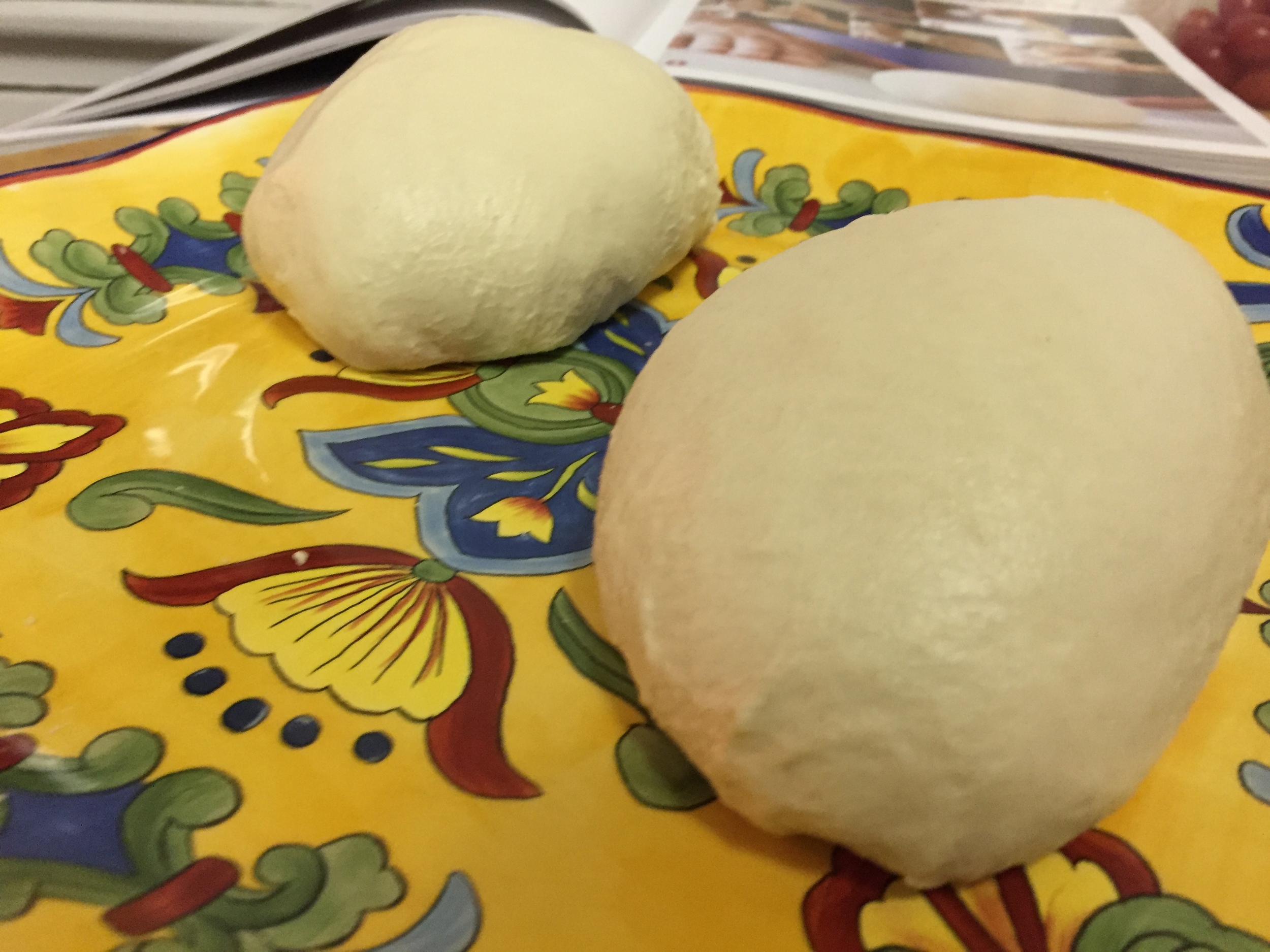Mastering the Pizza Master Class - Day 2 Recap - Degassing Dough and Making Sauce
Day two of the master class tests your dexterity as well as your patience. While the first day is simply adding items into a mixture, day 2 has you handling the dough and delicately forming round balls.
Day 2 of the master class is all about the air. Step one is removing the dough from the fridge (after 24 hours) and degassing the dough by mixing it for about one minute. This deflates the dough and makes it more compact. You're preparing the dough to build a strong gluten network. In a strange way this is the same as Obi Wan saying, "If you strike me down I'll be more powerful than you can possibly imagine." But replace "powerful" with "glutteny."
Once your dough is deflated and separated into two masses, you'll need to carefully ball the dough. Tony spends 200 words and six photos detailing how to fold the dough in on itself in order to preserve the gas inside the dough. It's critical that you ball the dough tight to lock in gas. A tight seal promotes a vast gluten network that traps air released by the yeast. The trapped air causes the dough to rise.
I was nervous handling the dough. How was I supposed to know if there was a leak? I pinched ends close as tight as I could and prayed the pizza gods would smile down on my feeble attempt to trap air inside a ball of dough. I honestly wouldn't know the results until the next day. To distract myself I made some sauce for tomorrow's pizza.
The sauce is super simple, as all good sauce tends to be. The small amount of ingredients in sauce would shock you. It's not some elaborate brew with garlic boiling and fanciful olive oils. A good sauce stems from fresh tomatoes (usually from a can, according to Tony), salt and olive oil.
For this sauce I mixed together some peeled plum tomatoes, olive oil, salt, tomato paste and crushed tomatoes to make a vermillion mixture that any pizza would be proud to host.
I tossed the ingredients in a pulsing blender and pulsed for about 30 seconds. I ended up adding a bit more salt, but nothing too crazy. You end up with a simple sauce that complements the dough, but doesn't get in the way of the other flavors.
Here's some takeaways from day 2
- When you degass the dough you're supposed to hear popping. I heard no such thing, but my dough was compact and ready to mangle.
- The ball forming process is a bit stressful, but (as you'll find out soon) it's hard to get wrong if you're careful with how you handle the dough. Be sure to fold it back in on itself and don't tear any of the dough!
- The best sauce is simple sauce. You want the tomatoes to sing on their own. It's their time to shine, don't clog the spotlight with other flavors. Add some olive oil and salt to draw the tomato flavor out.





